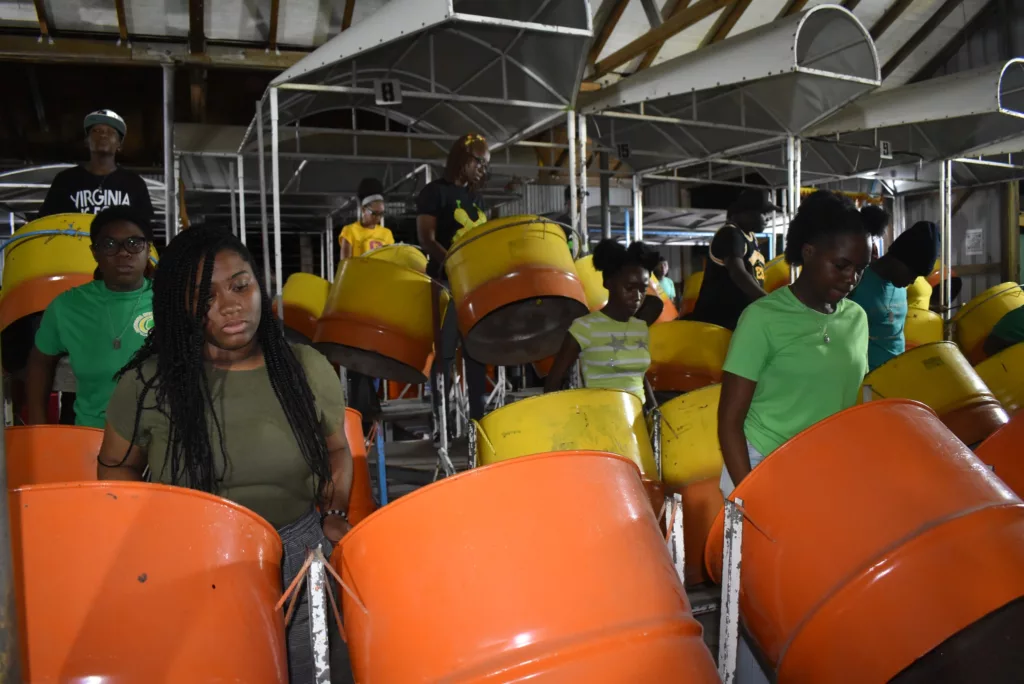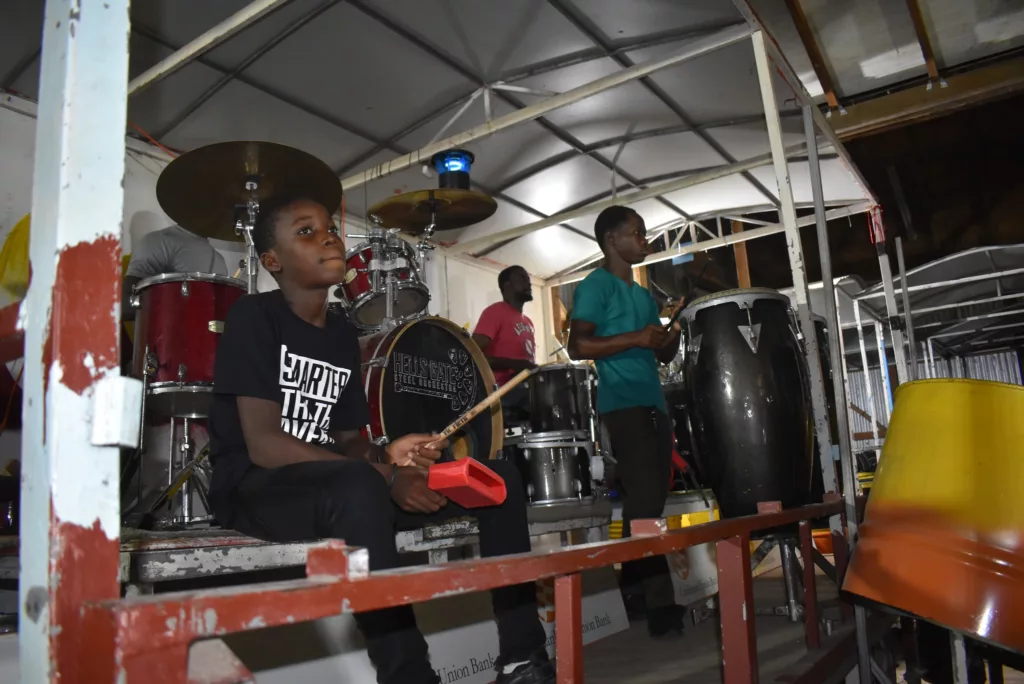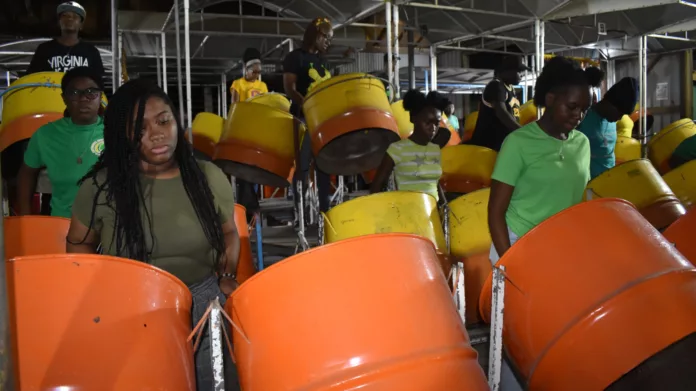By Charminae George
The history of the steelpan, and its influence in Antigua, is a treasure trove worth exploring. However, in order to explore the treasure trove, you would certainly need directions to it. Hopefully, this article will point you on the right path.
In the early days of the steelpan, the instrument was disapproved of by many of the upper and middle class. The acceptance of the instrument here in Antigua is credited to Governor Baldwin, who was said to disapprove of complaints made against the music.
The steelpan was the eventual result of musicians realising that dents on biscuit tins produced different pitches when struck in Trinidad during the 1930s. You must be wondering what situation they were in to discover this about biscuit tins?
Well, after the ban of ‘Tamboo Bamboo Bands’ which used different lengths of bamboo to create music from the streets of Trinidad, there was a shift to creating music with metal objects like biscuit tins, metal pipes, brake drums etc.
These new bands were called ‘iron bands’ in Antigua. The brake drum was the star instrument of the iron band and was referred to as the ‘iron’. Essentially, the ‘iron’ put the ‘iron’ in ‘iron band’.
From the biscuit tins, there were developments of the instrument by figures like Winston ‘Spree’ Simon, which led to the steelpan that we know today.






The process of building the instrument has more or less remained the same. It begins with hammering a 55-gallon oil drum into a concave, bowl shape (sinking), then hammering and later making shallow indentations along marked lines of notes (separating the notes and grooving).
Next, would be cutting the drum to a certain length depending on the type of pan, tempering the instrument over fire to strengthen the material, then allowing it to cool, the stages of tuning, and finally chroming, powder coating, or painting.
Well-known building pan builders in the 40s through the 70s include Seldon Edwards, Welly, Eustace Henry ‘Manning’, and Nunny Byam for the Hells Gate Steel Band, plus Vincent Freeland who built for the Rising Sun Steelband, and ‘Cowboy’ for Red Army Steelband.
A fun titbit, in the 1940s the steel bands painted their steelpans a certain colour to distinguish themselves. Specifically, the colours of the Hells Gate Steel Band were black and white, and Brute Force Steel Band, red, black and green.
A point to note, an organised group of steelpan players were referred to as a ‘steel band’ before the 1970s. For example, if you’re researching the history of the Hells Gate Steel Orchestra, you would notice that it was referred to as the ‘Hells Gate Steel Band’.
If you happen to be wondering what contributed to the change, an answer is the number of persons. A steel band consisted of 12-15 persons, however, due to bands expanding, steel bands began to be referred to as steel orchestras.
Fun fact, the longest continuously running steel orchestra in Antigua and Barbuda is the Hells Gate Steel Orchestra which started in 1945. The second longest is the Rhythm Masters Steel Orchestra (attached to the St Joseph’s Academy), which began in 1958.
The information provided in this article is courtesy of Antiguan pan historians, Patrick Johnny Gomes and Stafford Joseph.
Patrick Johnny Gomes was awarded the Most Precious Order of Princely Heritage (MH) for his contribution to the development of steelpan music in Antigua and Barbuda and in the diaspora.
Stafford Joseph has served in many capacities including Captain of the Hells Gate Steel Orchestra in the years 1980-2003, and President of the Antigua and Barbuda Steelpan Association in the years 1992-1993 and 2003-2005.

